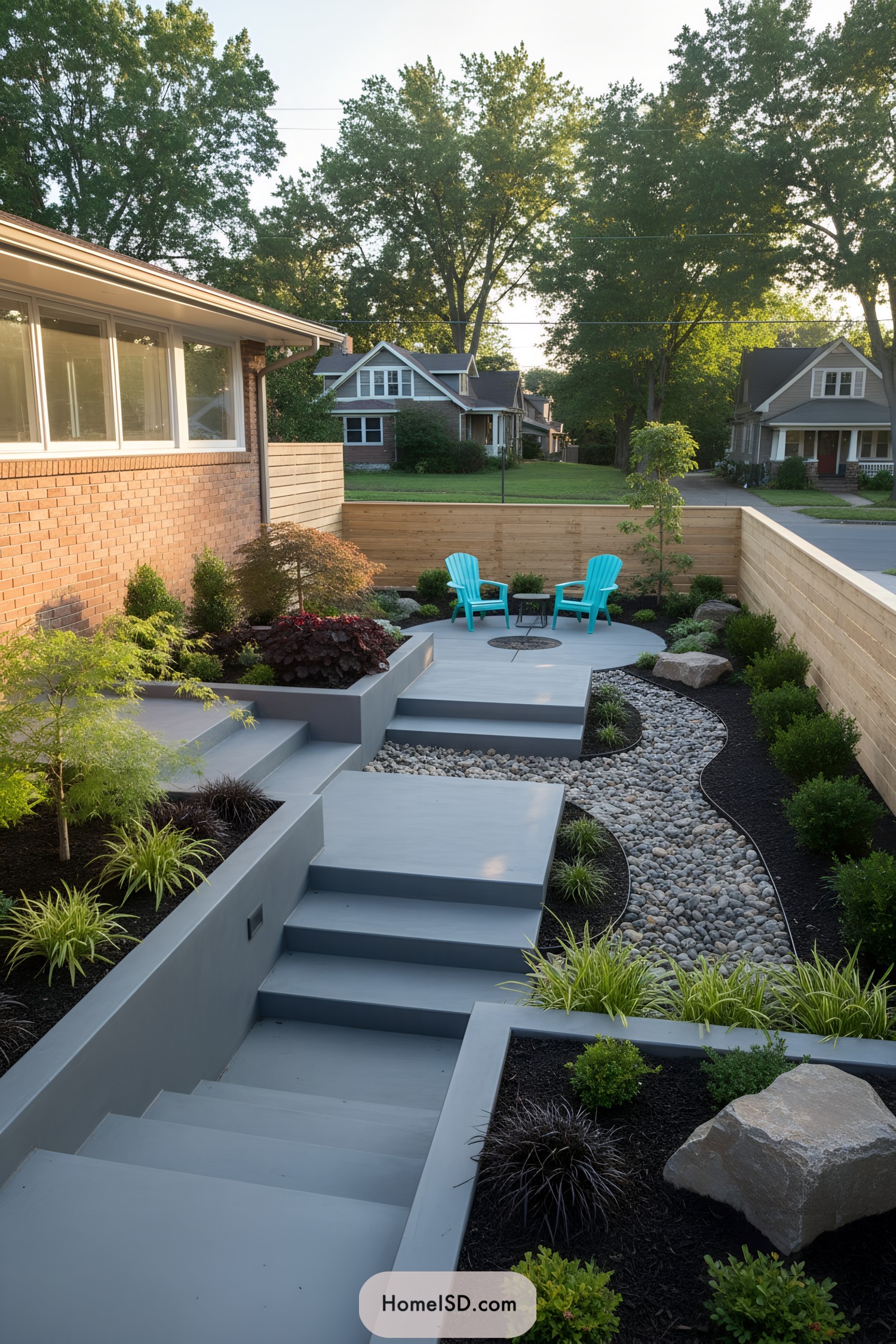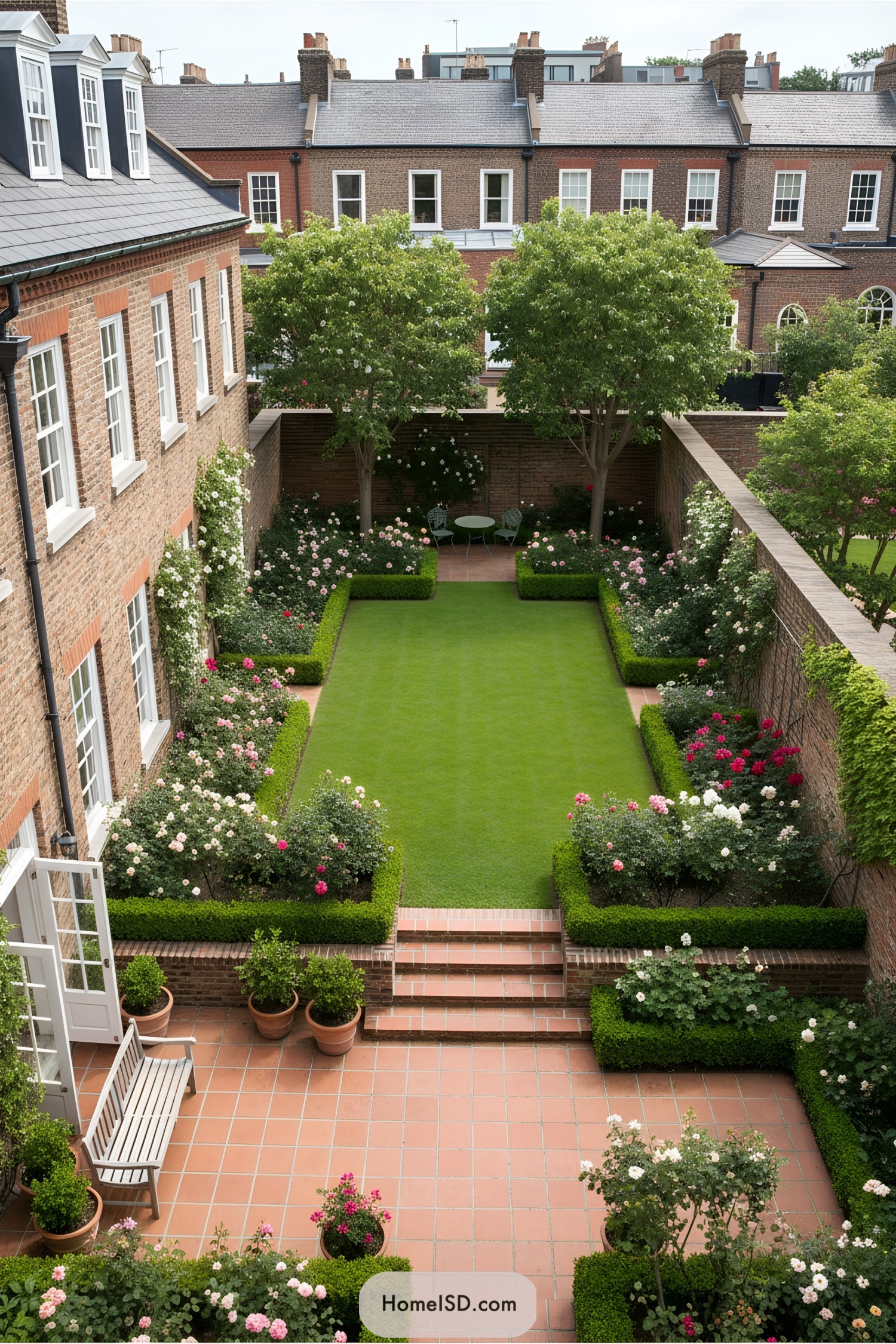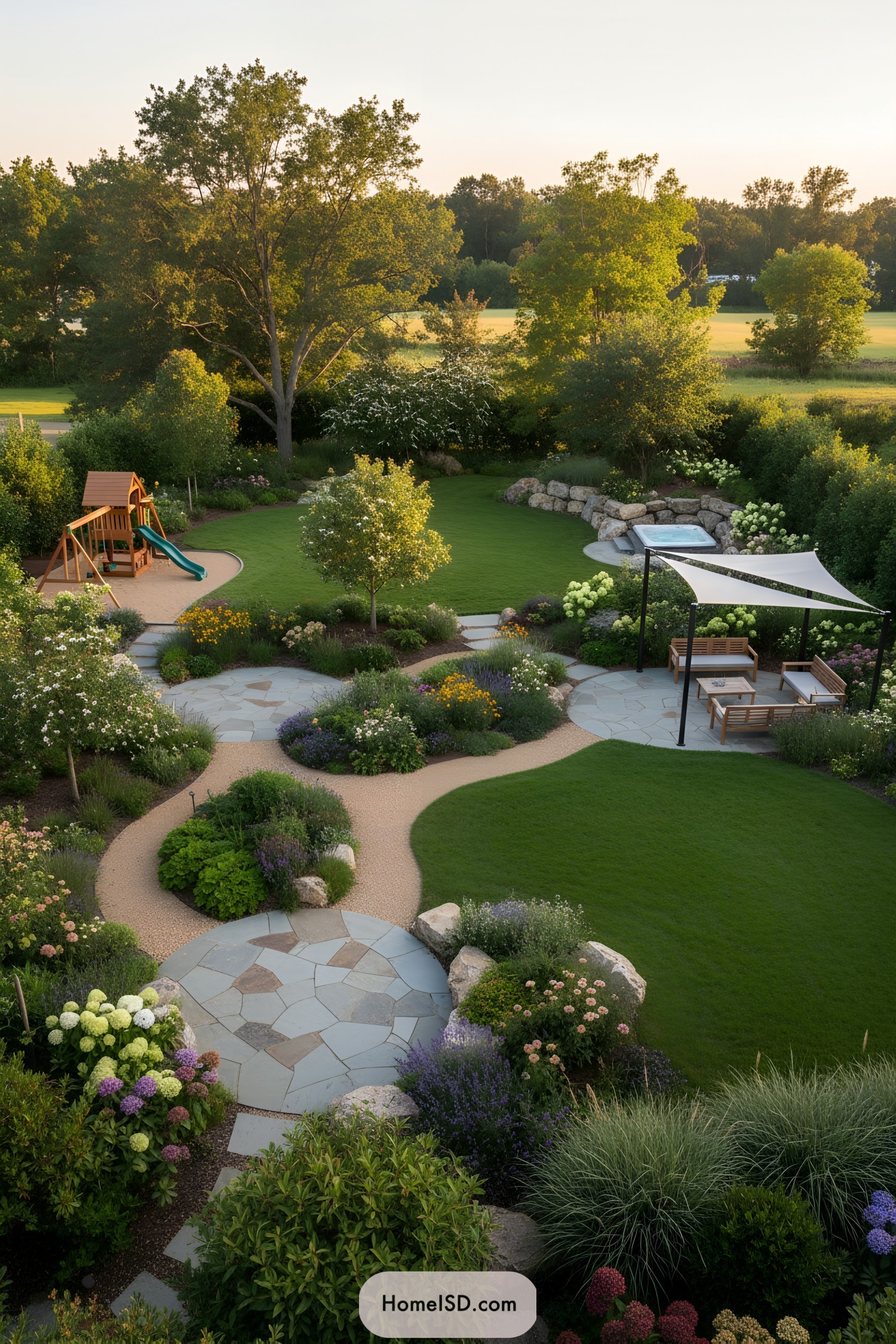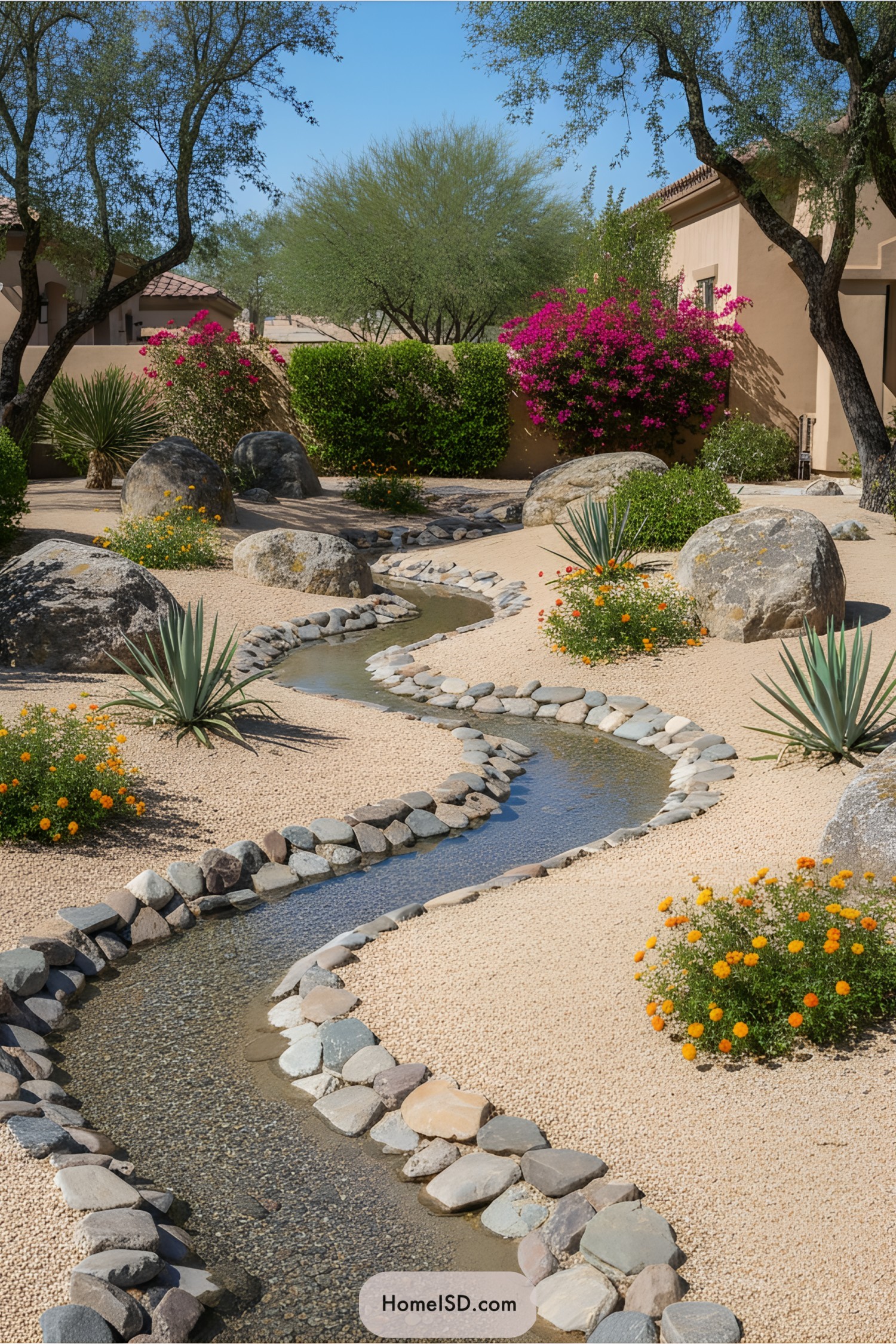Last updated on
Explore a variety of lawn alternatives that are perfect for San Diego’s unique climate, helping you maintain an environmentally friendly and visually appealing yard all year round.
Looking to transform your outdoor space but tired of the same old lawn? Well, you’re in luck! In this article, we’ll explore some fantastic alternatives to traditional grass that are perfect for San Diego’s sunny climate. Whether you have a small backyard or a sprawling estate, these lawn alternatives will not only save you time and money but also add a unique touch of style to your outdoor oasis.
So say goodbye to mowing and hello to a stunning, low-maintenance yard that will make your neighbors green with envy! Let’s dive right in and discover the best lawn alternatives San Diego has to offer.
“Understanding San Diego’s Climate”

San Diego, with its warm Mediterranean climate and abundant sunshine, offers the perfect backdrop for exploring alternative lawn options. Understanding the unique characteristics of this region’s weather patterns is crucial when it comes to selecting the right lawn alternative for your outdoor space.
With mild winters and hot summers, San Diego experiences a relatively dry climate. Rainfall is limited primarily to winter months, while summer brings long stretches of drought-like conditions.
This means that traditional lawns requiring frequent watering can quickly become unsustainable and expensive to maintain.
By embracing lawn alternatives specifically suited for San Diego’s climate, you can create a beautiful yard that thrives in these conditions without draining your water resources or breaking the bank on maintenance costs. From xeriscaping techniques utilizing drought-tolerant plants to ground covers that require minimal watering, there are numerous options available that will not only survive but thrive in our sunny city.
“Why Consider Lawn Alternatives”
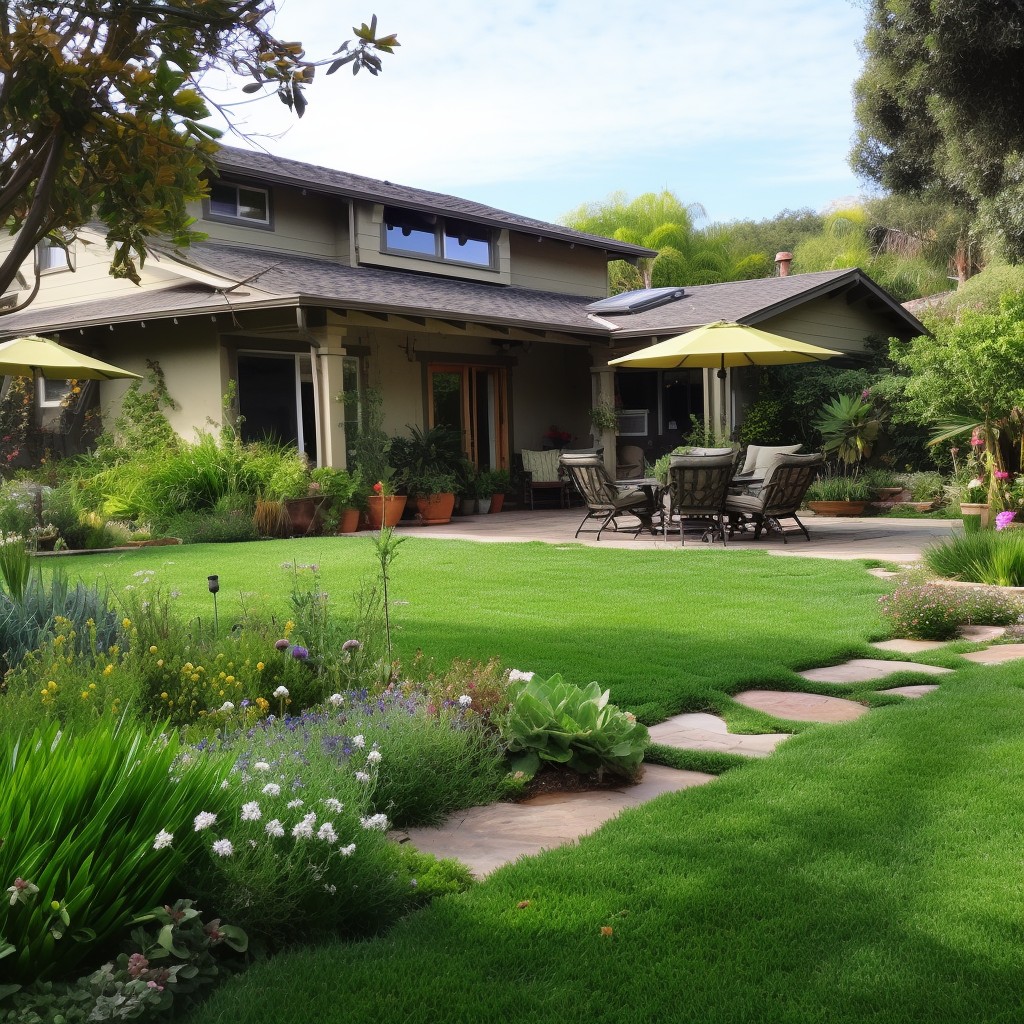
The constant need for watering, mowing, and fertilizing can quickly become time-consuming and expensive. That’s why considering lawn alternatives is a smart choice for homeowners looking to save both time and money while still enjoying a beautiful outdoor space.
But it goes beyond just convenience. By opting for lawn alternatives in San Diego, you’re also making an environmentally conscious decision.
Traditional lawns require copious amounts of water to stay lush and green year-round – something that doesn’t align with our region’s limited water resources.
By choosing alternative options like xeriscaping or native plants specifically adapted to San Diego’s climate, you’ll significantly reduce your water consumption without sacrificing aesthetics. Not only will this help conserve precious resources but it will also contribute positively towards sustainable living in our community.
Moreover, by exploring different types of lawn alternatives such as ground covers or artificial turf (which we’ll delve into later), you open up exciting possibilities for creativity in your outdoor design scheme. Imagine vibrant flower beds replacing large expanses of grass or stepping stones leading through lush ground cover instead of endless rows of sod!
“The Problem With Traditional Lawns”
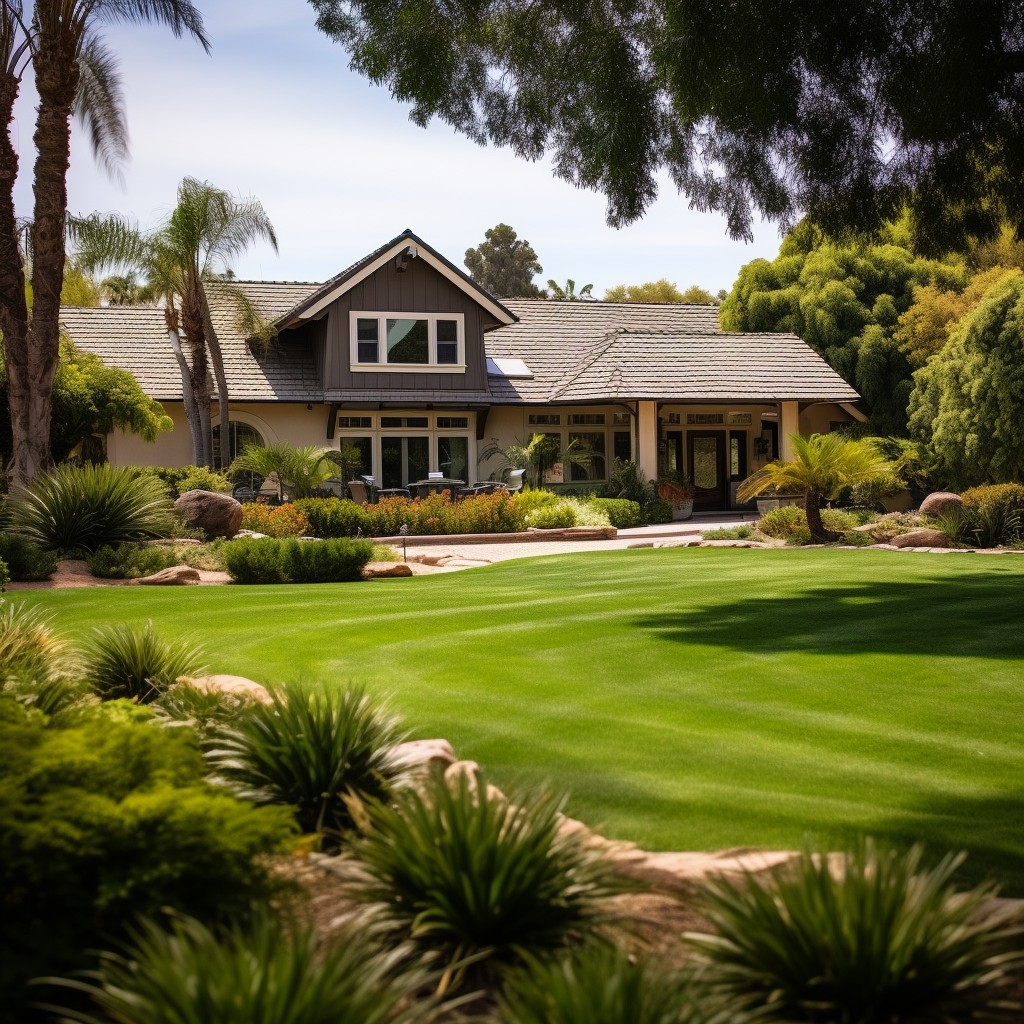
These conventional lawns come with their fair share of problems, especially in a place like San Diego. The warm climate and limited water resources make it challenging to maintain traditional grass lawns without excessive watering.
One major issue with traditional lawns is their high water consumption. In San Diego’s arid environment, where droughts are not uncommon, maintaining a healthy lawn can be an uphill battle.
Traditional grass requires regular watering to stay vibrant and green, which can put a strain on both your wallet and the local water supply.
Moreover, mowing is another time-consuming chore that comes along with having a traditional lawn. Spending hours each week pushing around heavy machinery or paying someone else to do it for you adds up over time – both in terms of effort expended and money spent.
Chemical fertilizers used on conventional lawns pose environmental concerns as they often contain harmful substances that can leach into groundwater or runoff into nearby streams or rivers when it rains.
“Environmental Impact of Traditional Lawns”
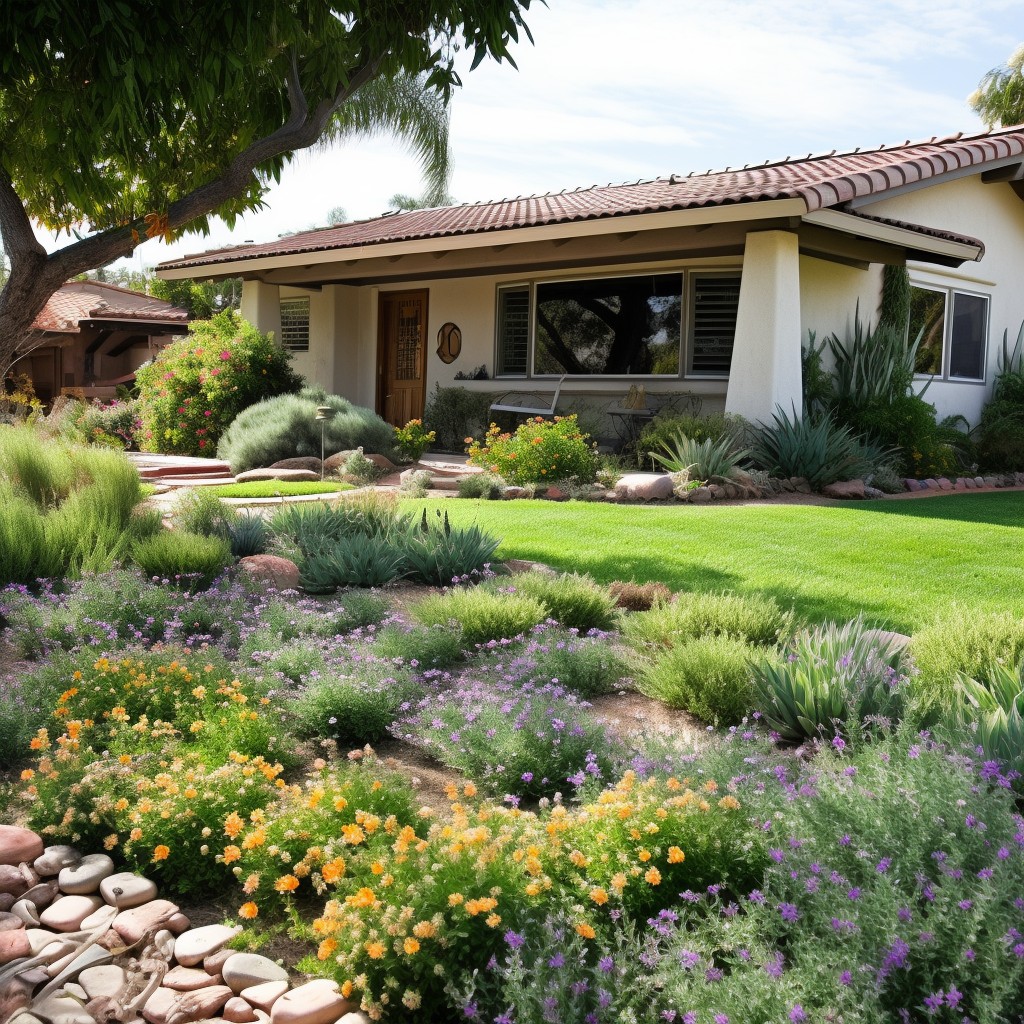
As we mentioned earlier, maintaining a traditional lawn requires significant amounts of water to keep it looking its best. In fact, according to the Environmental Protection Agency (EPA), landscape irrigation accounts for nearly one-third of all residential water use in the United States.
In San Diego’s arid climate where water scarcity is an ongoing concern, this excessive usage can strain local resources and contribute to drought conditions. The chemicals used in fertilizers and pesticides often find their way into our groundwater systems through runoff when it rains or during watering.
But that’s not all – traditional lawns also require regular mowing which contributes to air pollution due to emissions from gas-powered lawn mowers. These emissions release harmful pollutants such as carbon monoxide and nitrogen oxides into the atmosphere.
By opting for alternative lawn options that are more sustainable and eco-friendly, you can significantly reduce your environmental impact while still enjoying a beautiful outdoor space.
“Comparing Water Consumption: Lawns Vs Alternatives”
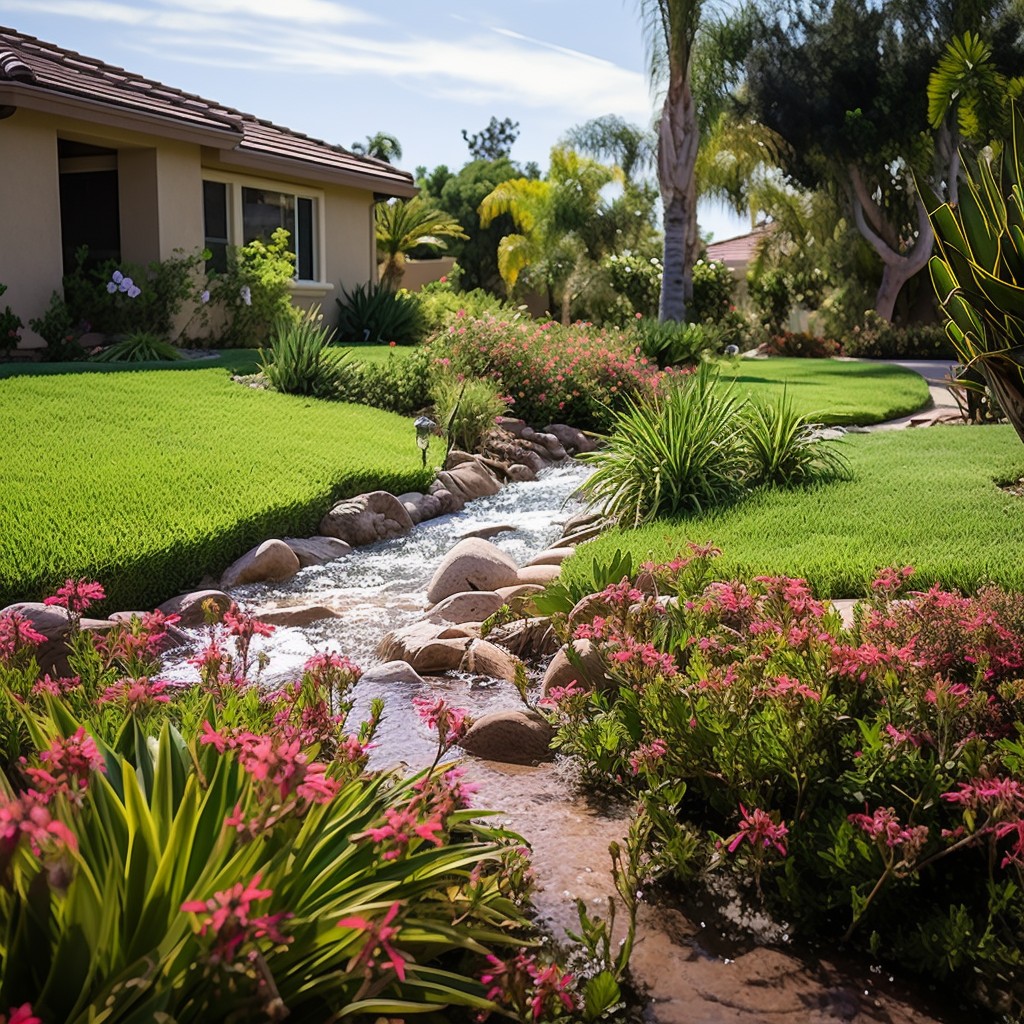
In San Diego’s arid climate, where water conservation is crucial, it’s important to consider alternatives that require less irrigation. Traditional lawns can be notorious for their high water demands and can quickly drain your resources.
Fortunately, there are several lawn alternatives that not only reduce your water consumption but also provide an equally beautiful landscape. By opting for these alternatives, you’ll not only save money on your monthly bills but also contribute towards conserving this precious resource.
Let’s take a closer look at some of the most popular lawn alternatives in San Diego and compare their water requirements with traditional grass lawns. By understanding the differences in watering needs between these options, you’ll be able to make an informed decision about which alternative best suits your lifestyle and environmental goals.
“Different Types of Lawn Alternatives”
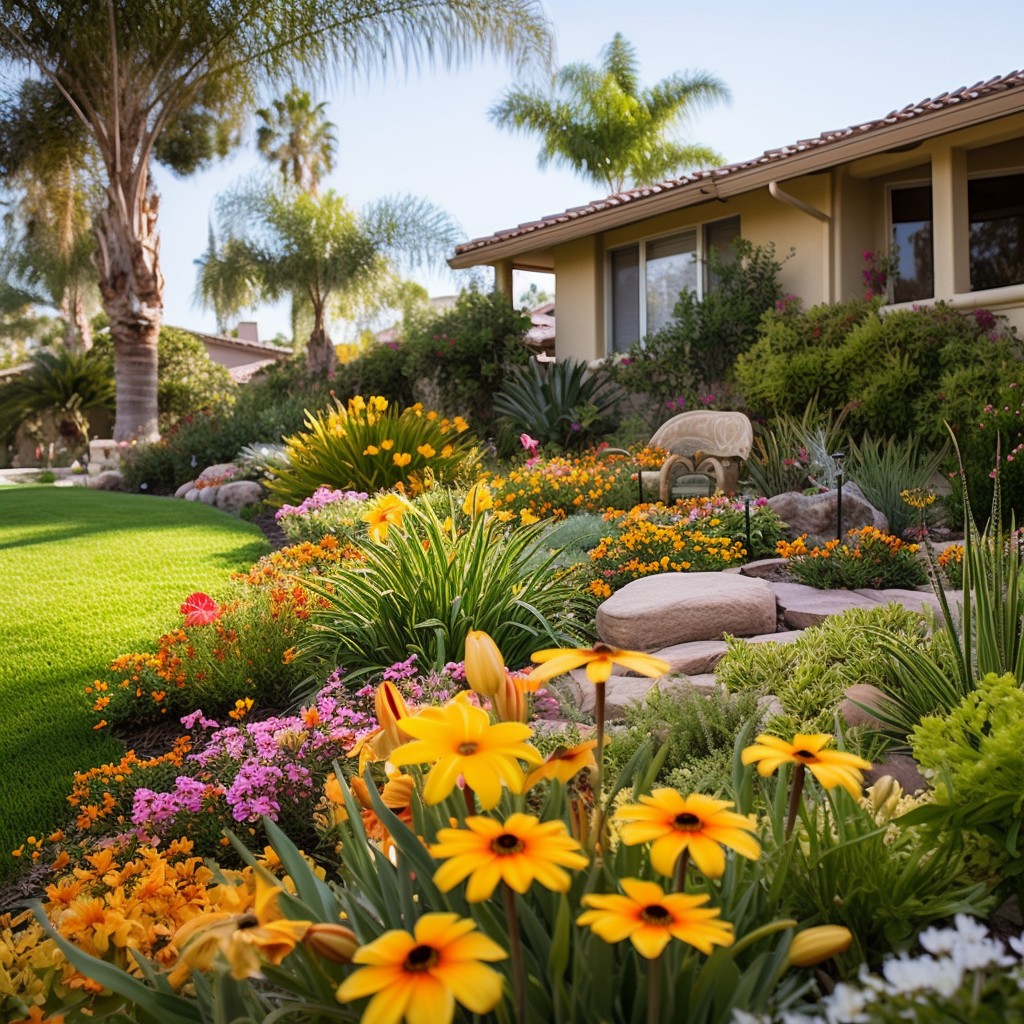
San Diego’s climate offers a unique opportunity to explore a variety of plants and materials that can replace traditional grass lawns. Let’s take a closer look at some of the different types of lawn alternatives you can consider for your outdoor space.
One popular choice is xeriscaping, which involves using drought-tolerant plants that require minimal water once established. These resilient plants not only conserve water but also add texture and color to your yard throughout the year.
If you’re looking for something more low-maintenance, ground covers are an excellent option. They provide dense coverage while suppressing weed growth and reducing erosion.
From creeping thyme to clover or even moss varieties, there is sure to be a ground cover that suits your aesthetic preferences.
For those who prefer the look of lush greenery without the hassle of maintenance, artificial turf may be worth considering. While it requires an upfront investment, artificial turf provides year-round beauty without watering or mowing requirements.
Another alternative gaining popularity in recent years is creating rock gardens or incorporating decorative rocks into your landscape design. Rocks not only add visual interest but also help with drainage and reduce soil erosion in sloped areas.
Pavers offer yet another creative solution as they can be used as pathways or patio spaces while minimizing grassy areas altogether—perfect for those seeking modern aesthetics with minimal upkeep needs. As we continue our exploration into various lawn alternatives suitable for San Diego’s climate, keep in mind factors such as cost-effectiveness, maintenance requirements, and how each option aligns with your personal style preferences.
“Xeriscaping: A Drought-Tolerant Solution”
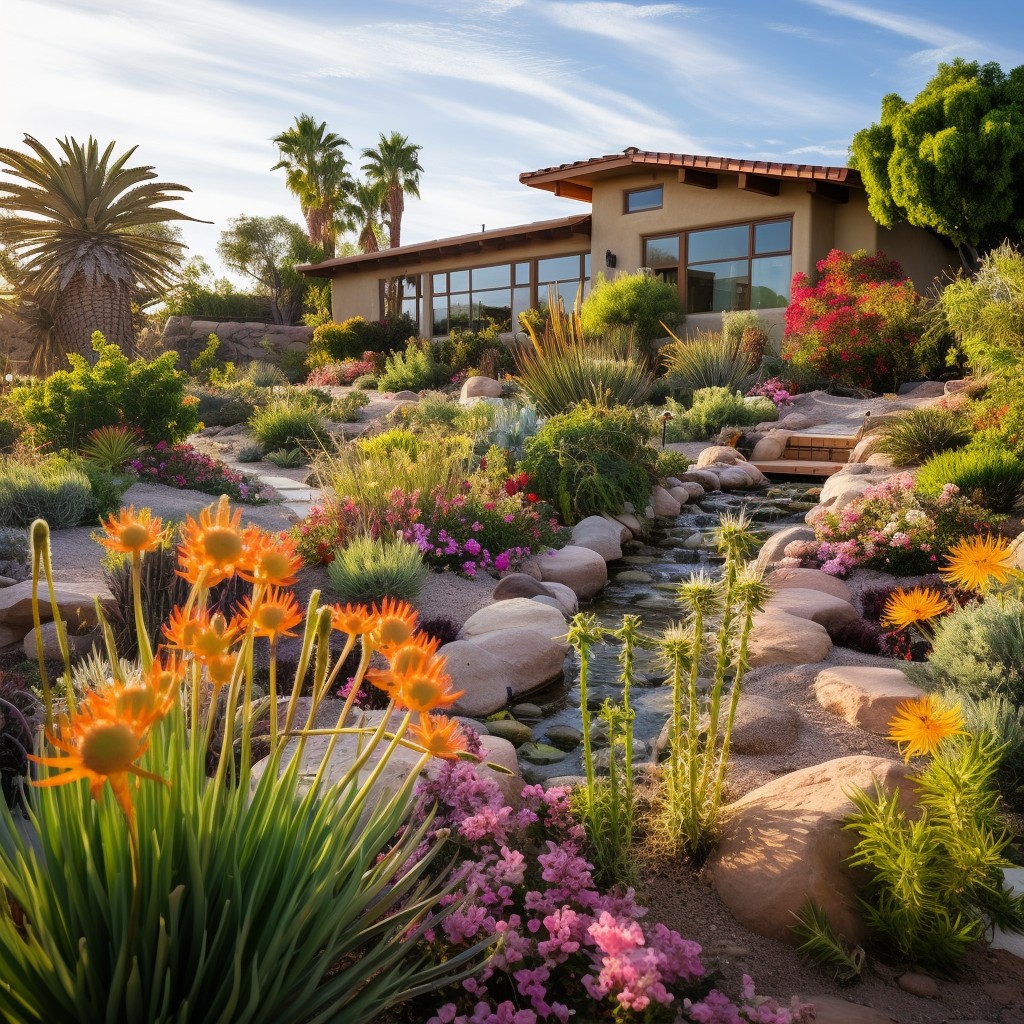
Xeriscaping is a landscaping technique that focuses on using drought-tolerant plants and minimizing the need for supplemental irrigation.
By incorporating xeriscaping into your lawn alternative design, you can create a stunning landscape that thrives in San Diego’s dry conditions. Imagine vibrant succulents, colorful desert flowers, and ornamental grasses transforming your yard into an oasis of low-water beauty.
Not only does xeriscaping help reduce water consumption significantly compared to traditional lawns or high-maintenance landscapes, but it also requires less maintenance overall. With minimal watering needs and plants adapted to the local environment, you’ll spend less time tending to your yard and more time enjoying it.
Xeriscape gardens are not only practical but also visually appealing. The variety of textures, shapes, colors found in drought-tolerant plants can add depth and interest to any outdoor space.
Plus with their ability to withstand hot temperatures without sacrificing their beauty makes them perfect for San Diego’s scorching summers.
“Native Plants for San Diego Lawns”
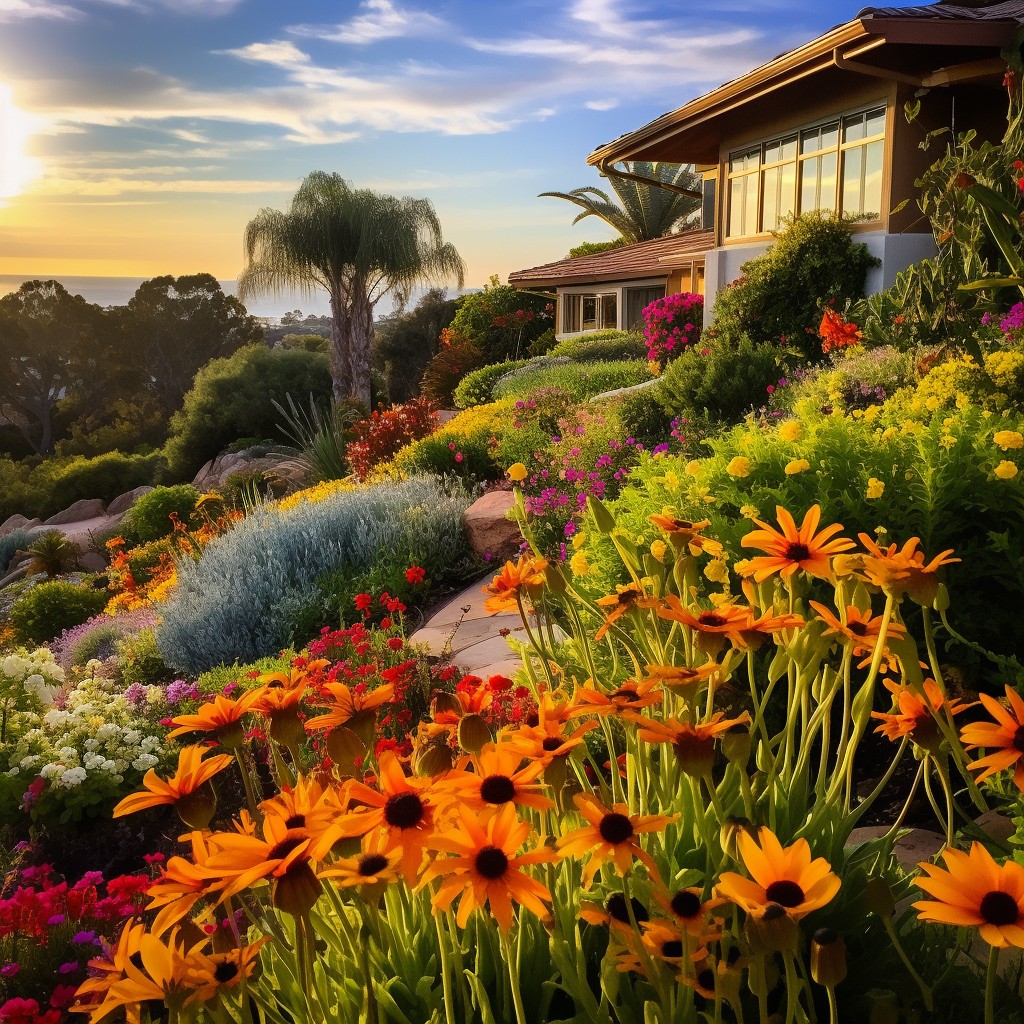
Native plants are well-adapted to the local environment, making them low-maintenance and water-efficient choices for your yard.
By incorporating native plants into your lawn, you not only create a beautiful landscape but also support local ecosystems. These plants have evolved over time to thrive in San Diego’s specific conditions, requiring less water and fertilizer compared to non-native species.
Imagine a vibrant tapestry of colorful wildflowers blooming throughout the year or lush greenery that attracts butterflies and hummingbirds right outside your window. With native plant alternatives, you can achieve this while reducing maintenance efforts and conserving precious resources.
From California poppies with their cheerful orange blooms to Matilija poppies with their striking white flowers resembling fried eggs (yes, really!), there is no shortage of stunning options when it comes to choosing native plant alternatives for your San Diego lawn.
Not only do these indigenous beauties add visual interest and texture but they also provide habitat for beneficial insects like bees and butterflies. Plus, many natives are drought-tolerant once established – meaning less watering during those hot summer months!
“Ground Covers As Lawn Alternatives”
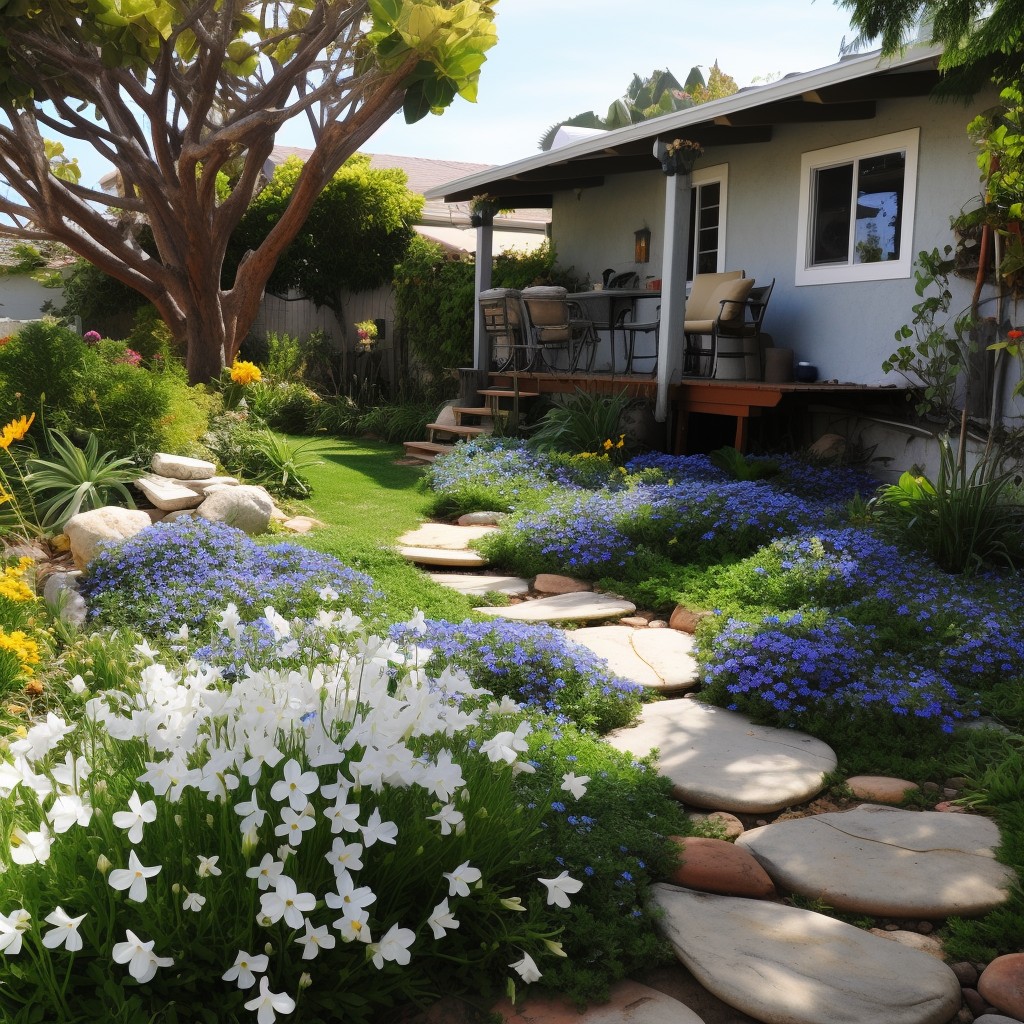
These low-growing plants not only provide excellent coverage but also help prevent soil erosion and suppress weed growth.
Ground covers come in various colors, textures, and heights, allowing you to create unique patterns or designs in your yard. From creeping thyme with its delicate purple flowers to the vibrant green foliage of Irish moss, there’s a ground cover option for every taste.
One advantage of using ground covers as lawn alternatives is their ability to withstand foot traffic better than traditional grass. This makes them an ideal choice if you have children or pets who love spending time outdoors.
Plus, they require less water compared to lawns once established.
To get started with ground covers as lawn alternatives in San Diego’s climate, it’s essential first to assess the amount of sunlight your yard receives throughout the day. Some varieties thrive in full sun while others prefer partial shade.
Once you’ve determined the appropriate type for your specific conditions (consider consulting local nurseries or gardening experts), prepare the area by removing any existing grass or weeds thoroughly. Then amend the soil if necessary before planting small plugs or spreading seeds evenly across the designated space.
Remember that patience is key when establishing ground cover as it may take some time for them to fill out completely and create a lush carpet-like appearance. However long it takes though; rest assured knowing that these hardy plants will reward you with year-round beauty without requiring excessive upkeep!
“Artificial Turf: Pros and Cons”
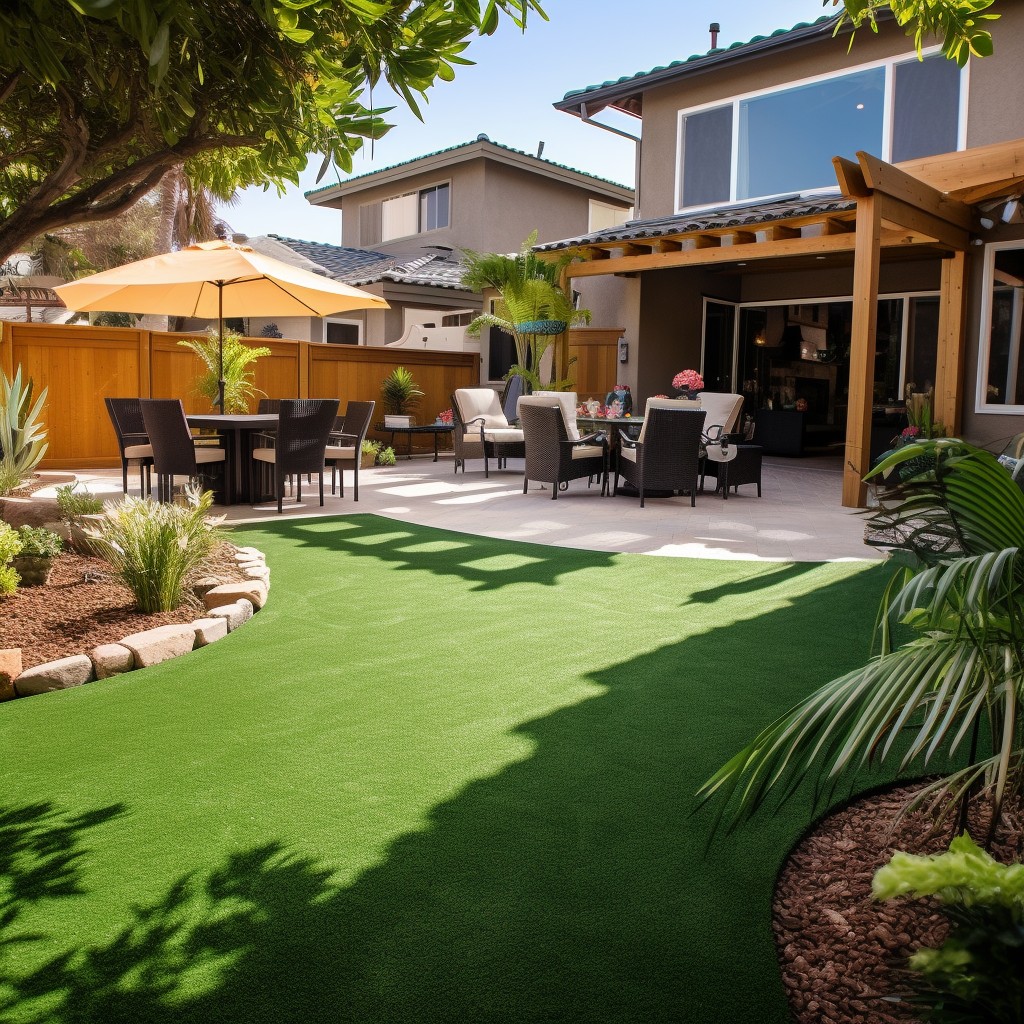
With its realistic appearance and durability, it’s no wonder that many homeowners are opting for this synthetic grass option. However, before making a decision, it’s important to weigh the pros and cons.
One of the biggest advantages of artificial turf is its minimal maintenance requirements. Say goodbye to mowing, watering, fertilizing or dealing with pesky weeds! Artificial turf requires little upkeep compared to traditional lawns while still providing an attractive outdoor space.
Another benefit is water conservation. In drought-prone areas like San Diego where water restrictions may be in place at times, artificial turf can help reduce your water consumption significantly since it doesn’t require regular irrigation like natural grass does.
On the flip side though there are some drawbacks worth considering as well. While modern technology has improved greatly over time in terms of realism and texture of artificial turfs available on market today; some people still find them less visually appealing than real grass due to their uniformity or lack thereof when compared side by side with natural lawns.
Additionally installing an entire yard with synthetic grass can come at a higher upfront cost than other lawn alternatives such as ground covers or native plants which may deter budget-conscious homeowners from choosing this option initially despite long-term savings on maintenance costs down line being significant enough reason alone justify investment made into installation process itself!
“Creating a Rock Garden”
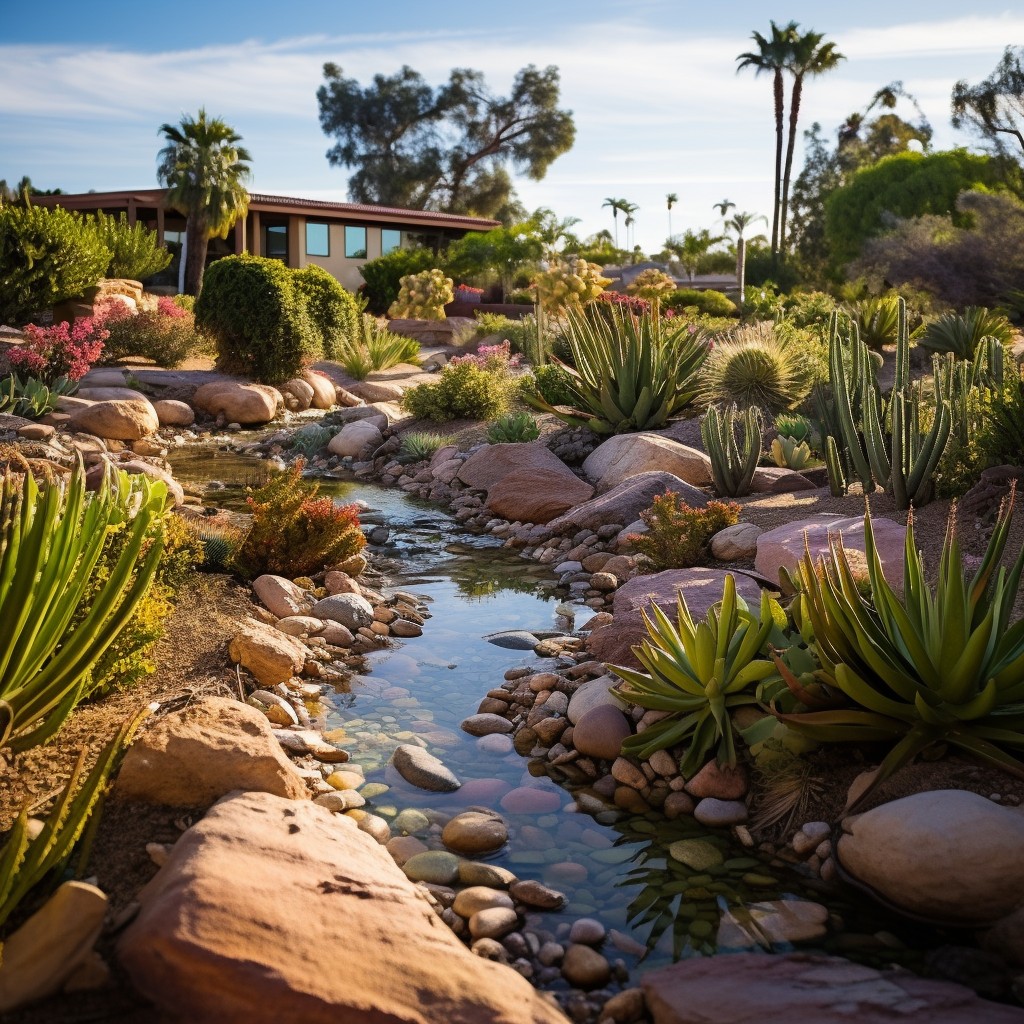
Rock gardens have been gaining popularity in recent years due to their natural beauty and minimal upkeep requirements. By incorporating rocks of various sizes, shapes, and colors into your outdoor space, you can create an eye-catching focal point that adds texture and visual interest.
Not only are rock gardens aesthetically pleasing, but they also offer practical benefits. Rocks retain heat during the day and release it at night, helping to regulate temperature fluctuations in your yard.
This can be particularly advantageous in San Diego’s warm climate where maintaining optimal growing conditions for plants can be challenging.
To create a stunning rock garden that complements your home’s architecture or personal style preferences, start by selecting rocks with different textures such as smooth river stones or rough granite boulders. Arrange them strategically throughout the designated area while considering factors like drainage patterns and sunlight exposure.
Once you’ve placed the rocks according to your desired design aesthetic, fill in gaps between them with drought-tolerant plants like succulents or native grasses that thrive in San Diego’s arid environment without requiring excessive watering or maintenance.
By opting for a rock garden instead of traditional grassy areas on your property, not only will you save time on mowing but also reduce water consumption significantly – making it an eco-friendly choice too!
“Using Pavers for Low-Maintenance Lawns”
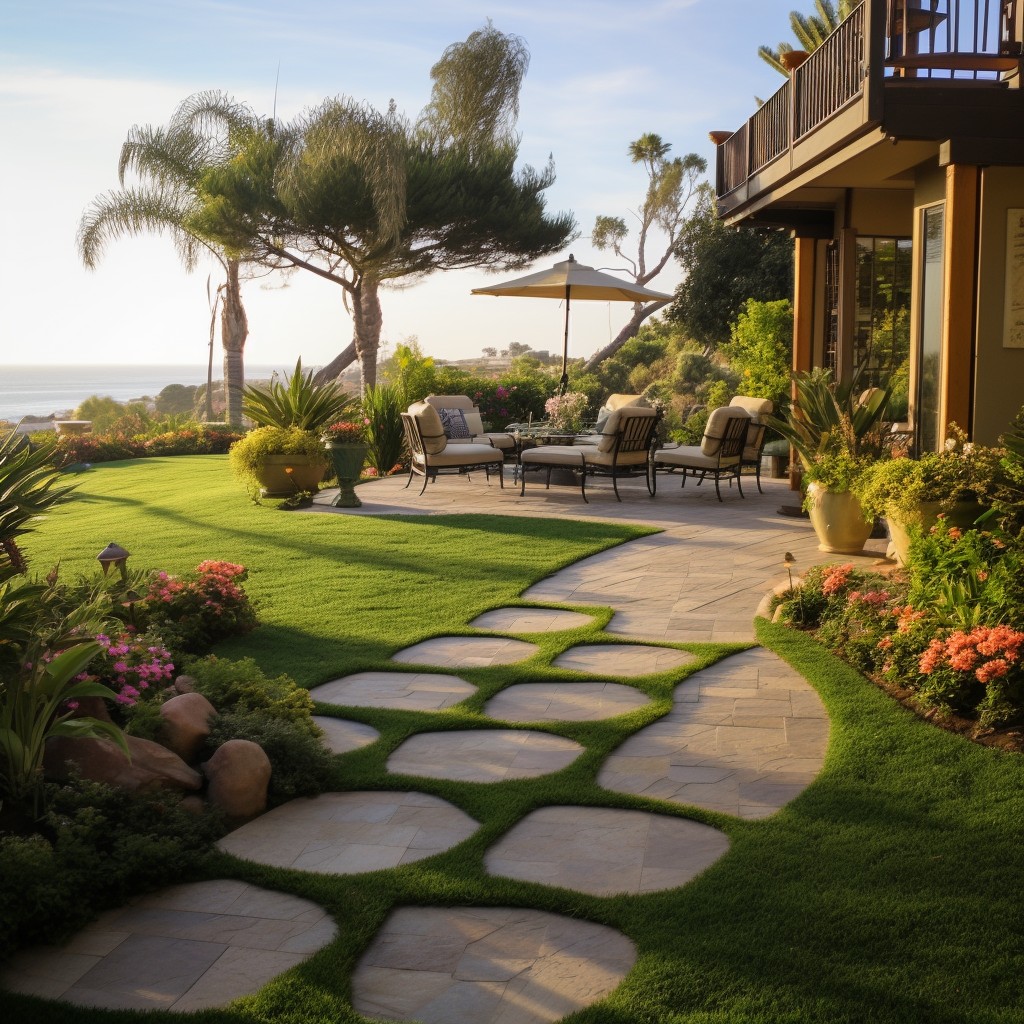
These versatile and durable materials are not only aesthetically pleasing but also require minimal upkeep.
Pavers come in various shapes, sizes, and colors, allowing you to create unique patterns or designs that suit your personal style. Whether you prefer a sleek modern look or a rustic charm, there’s a paver option for every taste.
One of the biggest advantages of using pavers is their durability. Unlike grass that requires regular mowing and watering to stay lush and green, pavers can withstand heavy foot traffic without losing their appeal.
They are resistant to wear and tear caused by weather conditions such as rain or intense heat.
Another benefit is the ease of maintenance. With traditional lawns often requiring frequent weeding and trimming, opting for pavers means saying goodbye to these time-consuming tasks.
Simply sweep away any debris or leaves from the surface occasionally – it’s as easy as that!
If an area gets damaged due to construction work or other activities in your yard (we’ve all been there), repairing individual sections with new pavers is much simpler than trying to revive patches of dead grass.
Using pavers also allows for better water management since they don’t absorb water like natural lawns do; instead they allow rainwater runoff which helps prevent flooding during heavy rains while replenishing groundwater supplies naturally.
“Lawn Alternatives for Kids and Pets”

Traditional lawns can often pose challenges for little ones and furry friends, from muddy paws to potential chemical exposure. That’s where lawn alternatives specifically designed with kids and pets in mind come into play.
One fantastic option is installing artificial turf. It provides a soft surface that’s perfect for children to play on without worrying about grass stains or allergies caused by pollen.
Plus, artificial turf is durable enough to withstand the energetic antics of our four-legged companions while remaining easy to clean up after any accidents.
Another great alternative that both kids and pets will love are ground covers like clover or creeping thyme. These low-growing plants create a lush carpet-like effect while being gentle on delicate paws and providing an inviting texture for little feet.
If you’re looking for something more interactive, consider incorporating stepping stones or pathways made from materials like gravel or mulch throughout your yard. This not only adds visual interest but also creates designated areas where children can explore safely without trampling delicate plants.
“Cost Analysis: Traditional Lawns Vs Alternatives”
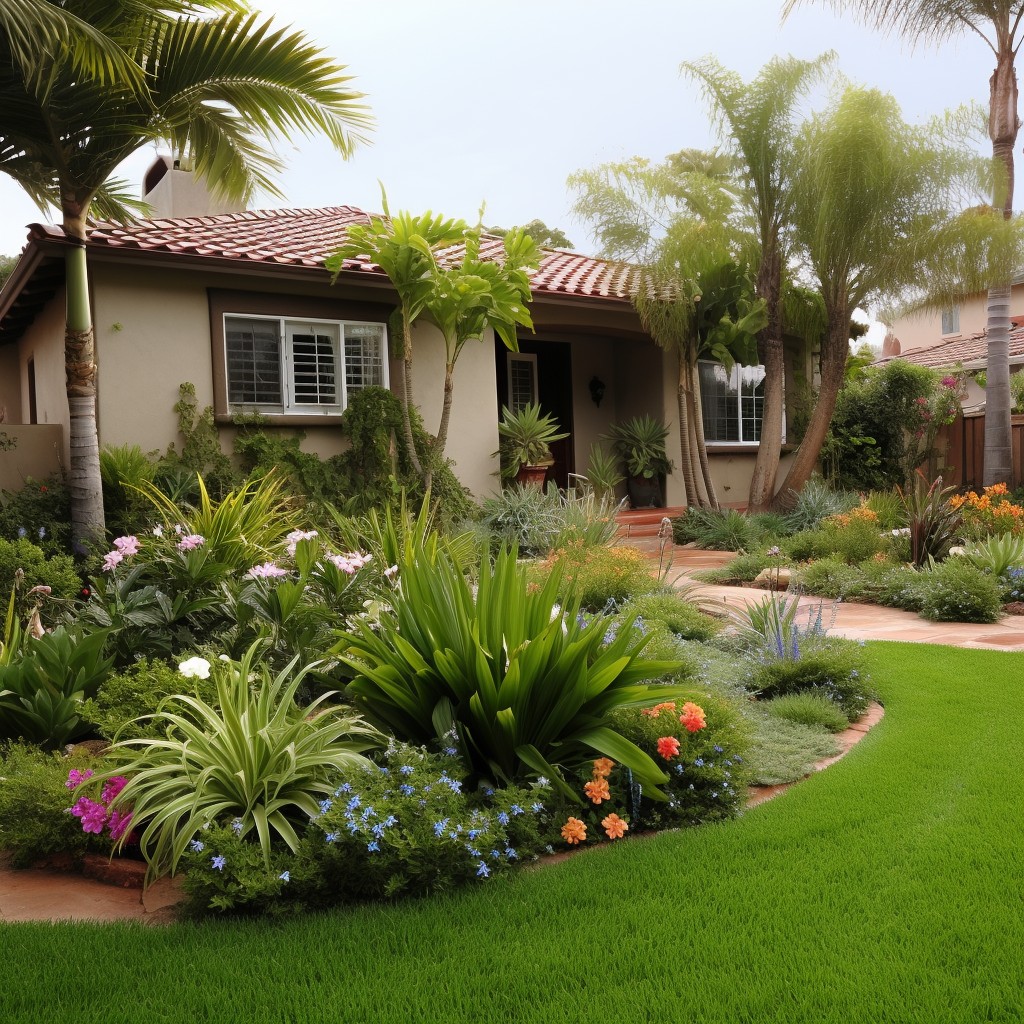
Traditional lawns can be expensive to establish and maintain over time. From purchasing grass seeds or sod, fertilizers, pesticides, and regular watering costs – the expenses can quickly add up.
However, opting for lawn alternatives in San Diego can offer significant cost savings in the long run. Many alternative options require minimal maintenance and water usage compared to traditional lawns.
This means you’ll spend less on irrigation systems or monthly water bills.
Some lawn alternatives like xeriscaping with drought-tolerant plants or using ground covers may not require any mowing at all! Imagine saying goodbye to costly lawnmower repairs and fuel expenses.
While there may be an initial investment when transitioning from a traditional lawn to an alternative option such as artificial turf or pavers for low-maintenance areas; these upfront costs are often offset by long-term savings on maintenance and water consumption.
“How to Transition From Lawn to Alternative”
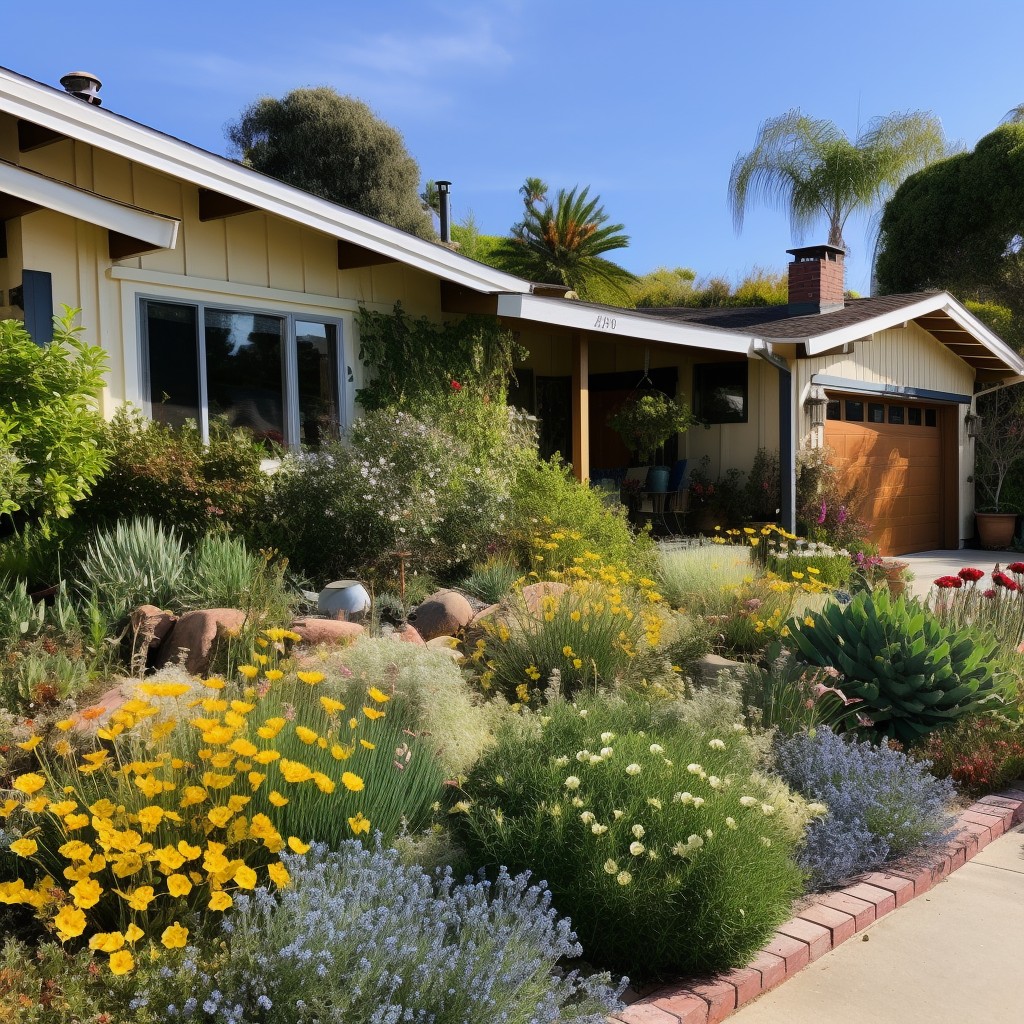
Here are some steps to help you make the transition:
1. Evaluate your space: Take a close look at your yard and determine which areas are best suited for lawn alternatives.
Consider factors such as sunlight exposure, soil conditions, and foot traffic.
2. Choose the right alternative: Based on your evaluation, select the most suitable lawn alternative for each area of your yard.
Whether it’s xeriscaping with drought-tolerant plants or creating a rock garden or using ground covers like clover or thyme – there are plenty of options available.
3. Plan out the design: Sketch out how you want each area to look once transformed into an alternative landscape.
Consider elements such as pathways, seating areas, focal points like water features or sculptures that will enhance its overall appeal.
- Prepare the soil: Before planting any new vegetation or installing hardscaping elements in place of grassy areas; prepare by removing existing turfgrass thoroughly along with weeds if any present in those spaces.
- Installation process : Depending on what type of lawn alternative you choose; follow specific installation instructions provided by experts regarding spacing between plants/seeds/groundcovers/pavers etc., watering requirements during initial establishment period etc.,
- Planting & Installation : Plant native species according to their recommended guidelines (spacing/distance apart) ensuring proper irrigation practices followed initially until they establish themselves well enough without needing much intervention later on.
- Maintenance tips : Once everything is installed correctly ensure regular maintenance tasks include watering when necessary (if not drought-resistant), pruning/shaping plants periodically so they don’t overgrow their designated spaces too quickly making them difficult maintainable long term basis especially if low-maintenance was one reason behind choosing these alternatives instead traditional lawns.
By following these steps, you can successfully transition from a traditional lawn to an alternative landscape that is not only visually appealing but also sustainable and low-maintenance. Remember, the key is to plan carefully and take it one step at a time.
“Maintaining Your Lawn Alternative”
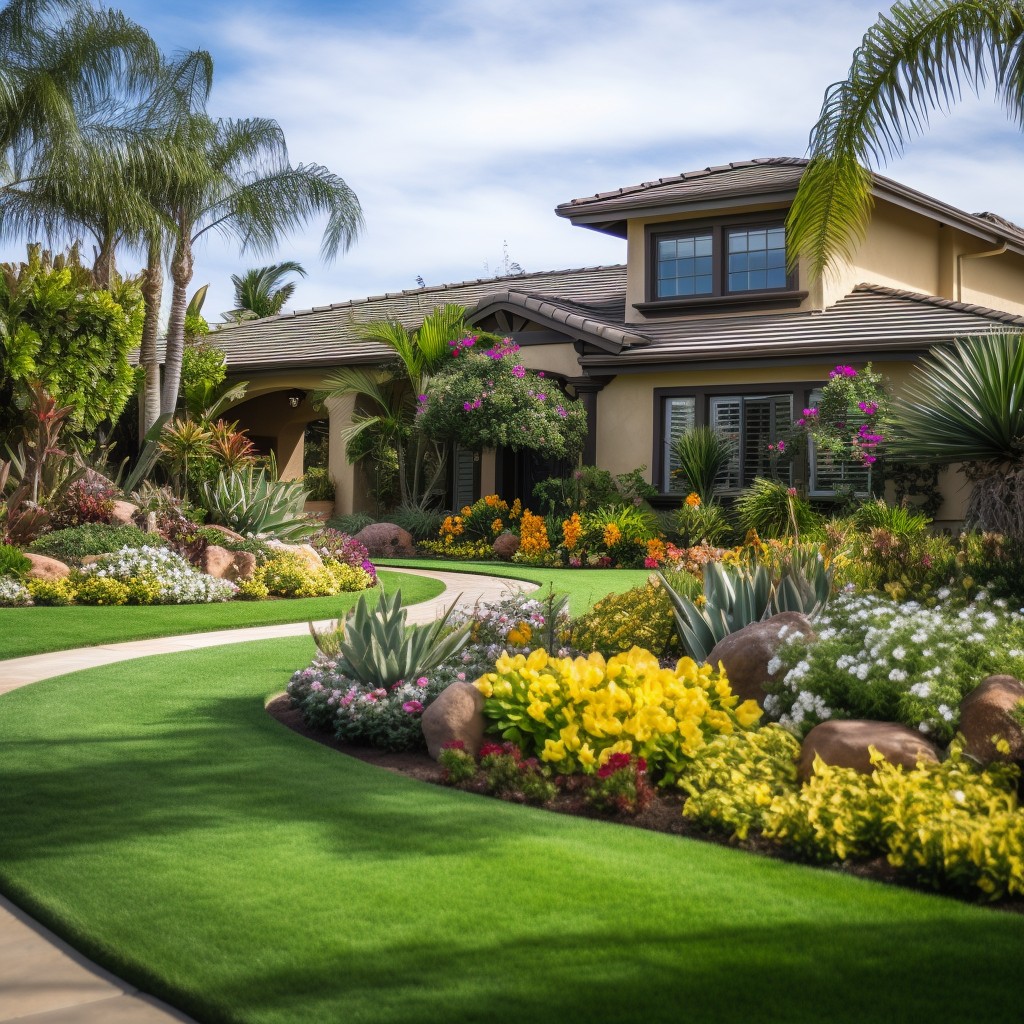
The great news is that most lawn alternatives require significantly less maintenance compared to traditional grass lawns. Say goodbye to endless hours spent mowing, watering, and fertilizing!
One key aspect of maintaining your lawn alternative is regular weeding. While many alternatives are designed to be low-maintenance, weeds can still find their way into your yard.
Regularly inspecting and removing any unwanted plants will help keep your lawn looking pristine.
Another important task is proper irrigation. Although most lawn alternatives are more drought-tolerant than grass lawns, they still need some water during dry periods or hot summer months in San Diego.
Be sure not to overwater as this can lead to root rot or other issues.
Depending on the type of alternative you choose for your yard, occasional trimming may also be necessary for certain ground covers or native plants that tend to spread quickly.
Lastly, don’t forget about periodic soil testing and amending if needed! Ensuring that the soil has adequate nutrients will promote healthy growth and longevity for your chosen lawn alternative.
“Local Resources for Lawn Alternatives”
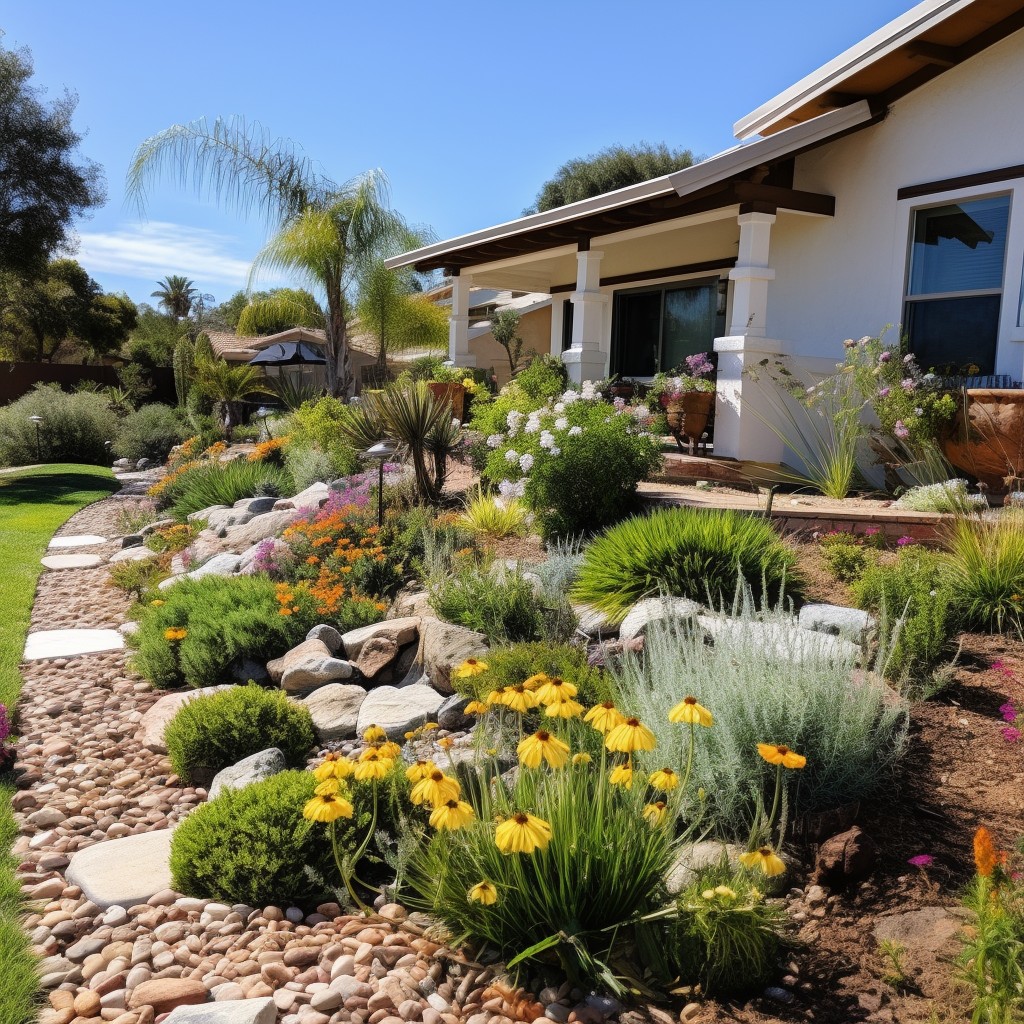
Luckily, this vibrant city is filled with a plethora of options and experts who can help you create a stunning outdoor space that suits your style and budget.
Local nurseries and garden centers are excellent places to start your search for lawn alternatives. These establishments often carry a wide variety of native plants, ground covers, succulents, and other low-maintenance options that thrive in San Diego’s climate.
The knowledgeable staff at these stores can provide valuable advice on which plants will work best for your specific needs.
Consider reaching out to landscape designers or contractors specializing in sustainable landscaping practices. They have extensive knowledge about local flora and fauna as well as experience designing beautiful yards using eco-friendly alternatives to traditional lawns.
San Diego also hosts various gardening events throughout the year where you can connect with fellow enthusiasts who share their experiences with different lawn alternatives. Attending workshops or seminars led by horticulturists or master gardeners will give you insights into successful techniques used by locals in transforming their landscapes.
Don’t forget about online resources too! Local gardening forums or social media groups dedicated to sustainable landscaping are great platforms where residents exchange ideas on lawn alternatives specific to San Diego’s unique conditions.
“Adding Value to Your Home With Lawn Alternatives”
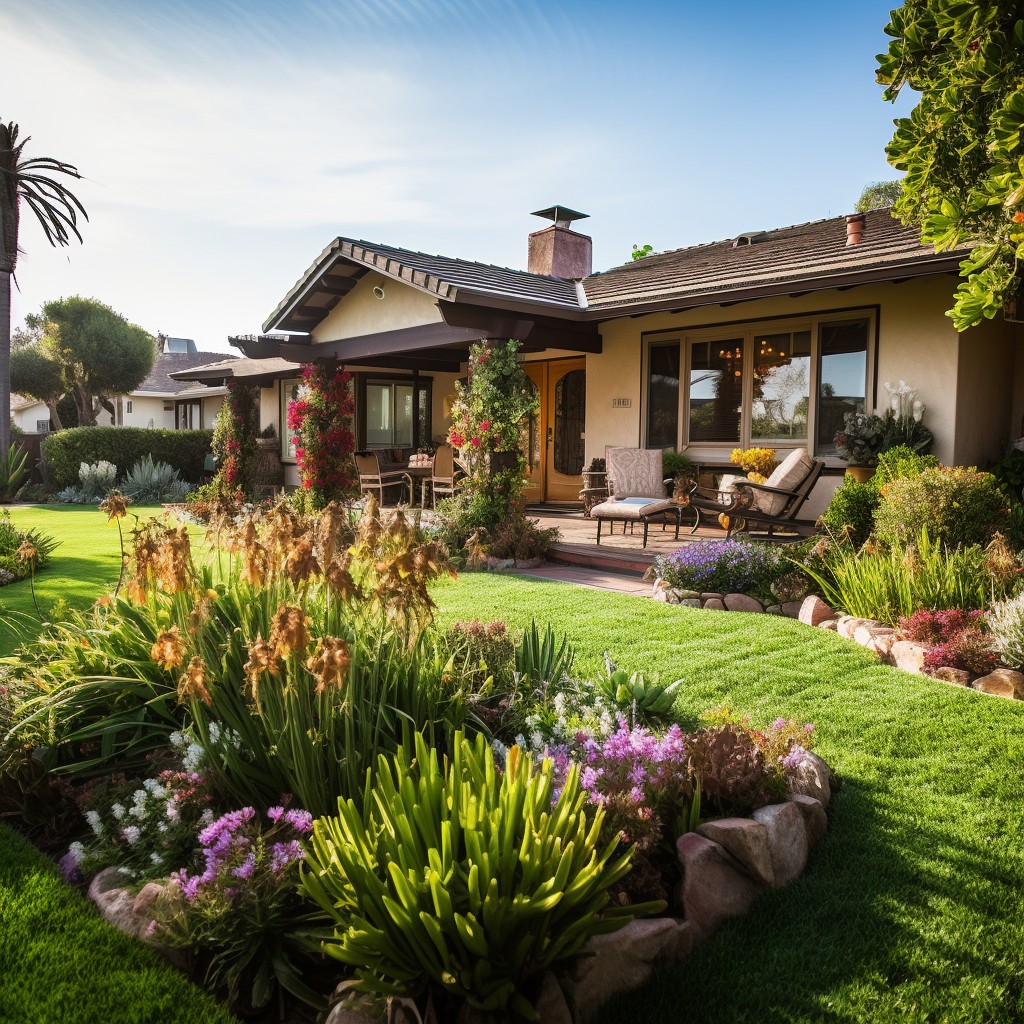
A beautifully landscaped yard not only enhances curb appeal but also increases the overall value of your property. And guess what? Lawn alternatives can be a game-changer in this regard.
Imagine potential buyers being greeted by an eye-catching front yard that stands out from the rest of the neighborhood. By opting for unique and visually appealing lawn alternatives, you’re showcasing your creativity and attention to detail – qualities that are highly sought after in today’s real estate market.
Not only do lawn alternatives add aesthetic appeal, but they also offer practical benefits that can boost your home’s value even further. For instance, xeriscaping with drought-tolerant plants or using ground covers reduces water consumption significantly compared to traditional lawns.
This eco-friendly approach is not only attractive for environmentally conscious buyers but also saves them money on water bills – a win-win situation!
Low-maintenance options like artificial turf or pavers require minimal upkeep while still providing an inviting outdoor space for relaxation and entertainment purposes. Potential homeowners will appreciate having more time on their hands instead of spending hours mowing grass or pulling weeds.
By investing in innovative lawn alternatives tailored specifically to San Diego’s climate conditions, you’re positioning yourself as someone who understands sustainable living practices while offering future homeowners an enticing outdoor oasis they’ll love coming home to every day.
“Future Trends in Lawn Alternatives”
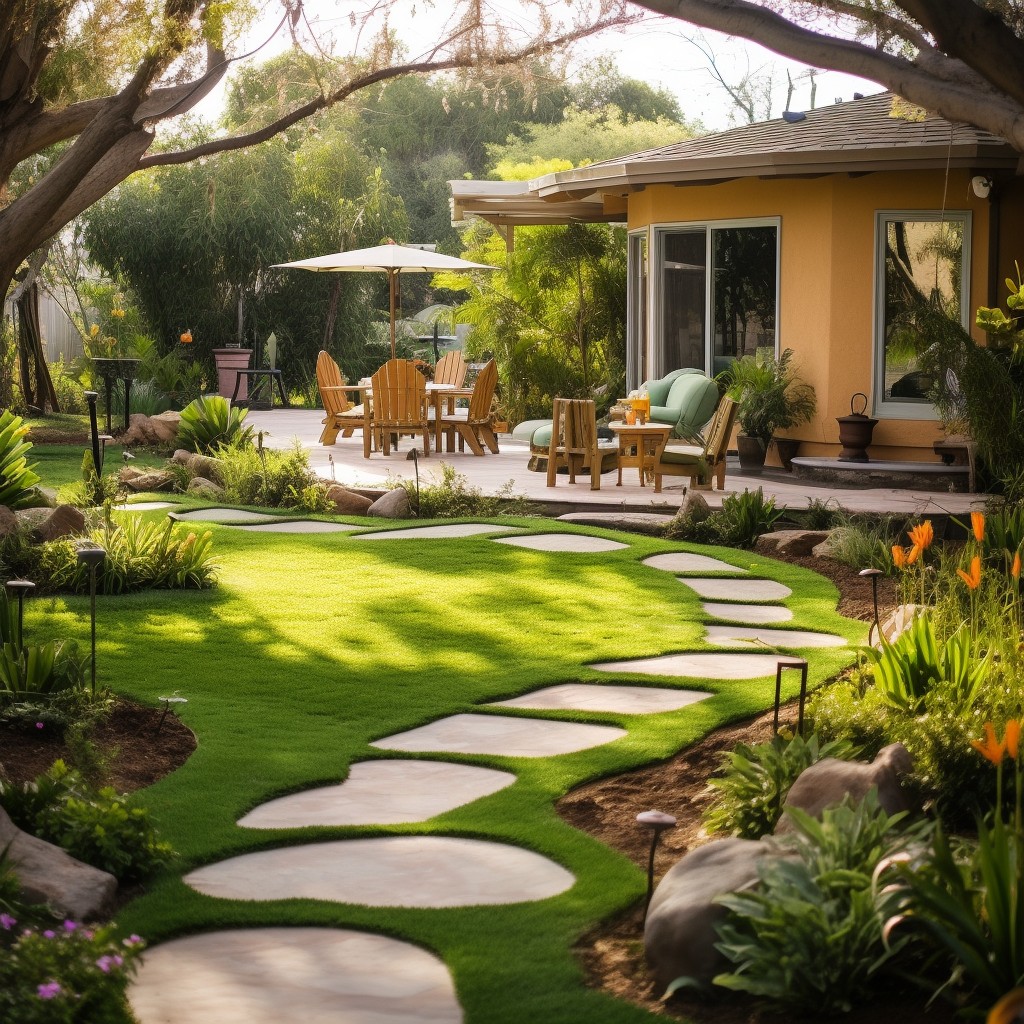
With a growing focus on sustainability and environmental consciousness, homeowners in San Diego can expect to see some exciting trends in lawn alternatives.
One emerging trend is the use of vertical gardens or living walls as an alternative to traditional lawns. These stunning installations not only add a touch of greenery but also maximize space by utilizing vertical surfaces such as fences or exterior walls.
Imagine transforming your plain backyard fence into a vibrant tapestry of plants and flowers!
Another trend gaining popularity is the incorporation of edible landscapes into outdoor spaces. Instead of dedicating large areas solely for grass, homeowners are opting for fruit trees, vegetable gardens, and herb beds that not only provide fresh produce but also create beautiful visual interest.
With advancements in technology and materials science, we can expect more realistic-looking artificial turf options that closely mimic the appearance and texture of natural grass without requiring water or maintenance.
Lastly, there is an increasing emphasis on creating wildlife-friendly yards through native plantings that attract pollinators like bees and butterflies while providing habitat for birds. This approach not only adds beauty but also contributes positively to local ecosystems.
“Local Regulations About Lawns and Landscaping”
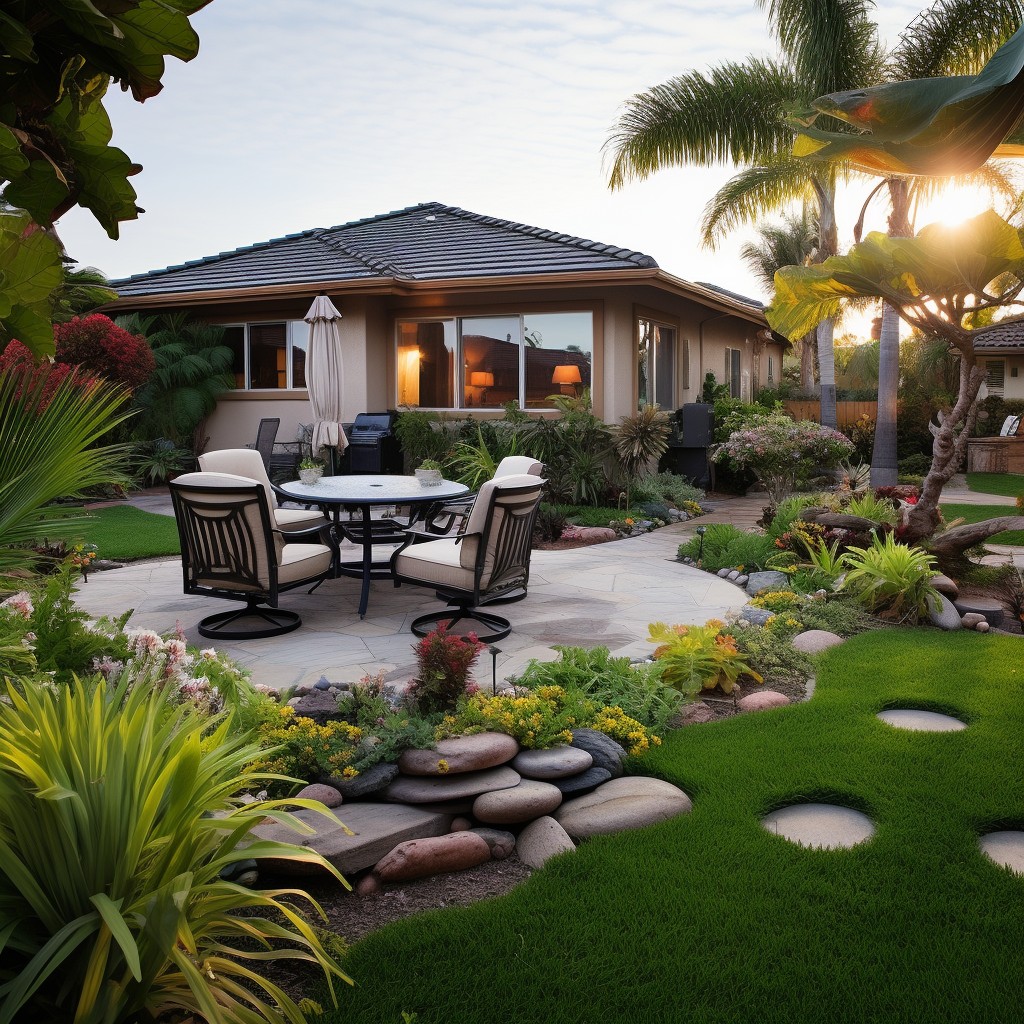
In San Diego, like many other cities, there are specific rules in place regarding lawns and landscaping.
Before you embark on your lawn alternative journey, take the time to familiarize yourself with these regulations. Some neighborhoods or homeowner associations may have restrictions on certain types of plants or materials used for landscaping purposes.
It’s always a good idea to check with local authorities or consult any applicable neighborhood covenants before making significant changes.
San Diego has implemented water conservation measures due to its semi-arid climate and periodic drought conditions. These measures often include restrictions on watering schedules and limitations on water usage for outdoor spaces.
By choosing appropriate lawn alternatives that require less water than traditional grass lawns, you can not only comply with these regulations but also contribute towards conserving this precious resource.
By staying informed about the local regulations surrounding lawns and landscaping in San Diego, you can ensure that your new yard not only meets aesthetic standards but also aligns with environmental guidelines set by the city. So before diving into creating a stunning lawn alternative paradise in your backyard oasis make sure you’re up-to-date on all relevant rules and requirements!
FAQ
What is the best low maintenance grass in Southern California?
The best low-maintenance grass in Southern California is Fescue grass.
Can I have a clover lawn in California?
Yes, you can have a clover lawn in California as it does particularly well in areas with mild winters and dry summers.
Can I grow a clover lawn in Southern California?
Yes, you can grow a clover lawn in Southern California as it remains bright green throughout the year, requires little water, even in drought conditions, and does not need mowing.
What drought-resistant plants are recommended for landscaping in San Diego?
Recommended drought-resistant plants for landscaping in San Francisco include agave, pampas grass, California buckwheat, and California lilac.
How effective are native California grasses as lawn alternatives in Southern California?
Native California grasses are effective as lawn alternatives in Southern California.
What are eco-friendly lawn substitutes suitable for the San Diego climate?
Eco-friendly lawn substitutes suitable for the San Diego climate include native plants, ornamental grasses, and ground cover like clover or thyme, as they require less water and maintenance compared to traditional grass.
Recap
